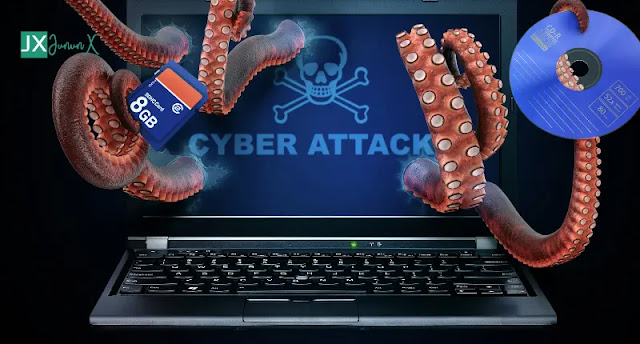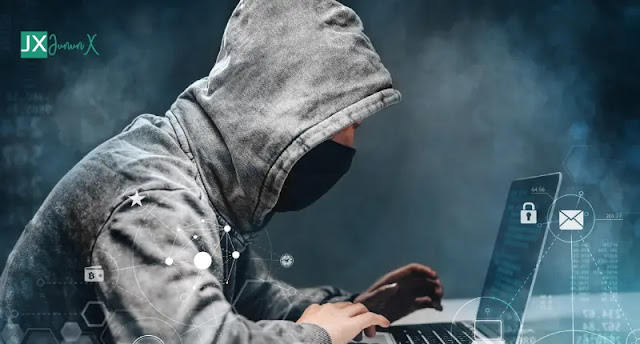As remote work becomes the norm, cyber attacks also increasingly target vulnerable computer systems. Cybersecurity has become more important than ever as hackers find new ways to infiltrate company networks and steal sensitive data.
In this blog, we will provide an overview of cyber attacks in the age of remote work, including the impact of remote work on cybersecurity and statistics on how cyber attacks happen during remote work.
You will then dive into the different cyber-attack types you should know, such as launch cyber attacks like social engineering and malware attacks.
Following these best practices can keep your systems safe and secure from cyber threats.
Overview of Cyber Attacks in the Age of Remote Work
The shift towards remote work has increased cyber attacks as companies rely more on digital platforms and cloud services. Common types of cyber attacks include phishing, malware, and ransomware. These attacks can cause significant financial and reputational damage to individuals and organizations.
Training employees on cybersecurity best practices, such as identifying suspicious emails or links, is vital.
Importance of Cybersecurity in the Post-Pandemic World
The COVID-19 pandemic has accelerated the shift towards remote work, making cybersecurity more important than ever.
Cyber attacks have become more frequent and sophisticated, targeting vulnerable remote work systems. To ensure the safety and security of your systems, it's essential to implement strong cybersecurity measures such as firewalls, antivirus software, and two-factor authentication.
In addition to these technological measures, employee education and training on cybersecurity best practices are crucial in preventing cyber attacks.
Regular updates and maintenance of software and hardware systems can also help mitigate potential cyber threats.
By staying vigilant and taking proactive steps to protect your systems from cyber attacks, you can ensure that your remote work environment remains safe and secure in the post-pandemic world.
Impact of Remote Work on Cybersecurity
As remote work becomes more prevalent, it has also led to an increase in cyber attacks. This is due largely to using personal devices and unsecured computer networks that employees may use while working from home.
To combat this, implementing cybersecurity measures such as firewalls, antivirus software, and two-factor authentication is essential for remote workers.
Overall, it's important to understand the impact of remote work on cybersecurity and take steps to keep your systems safe and secure.
Statistics on Cyber Attacks during Remote Work
As the COVID-19 pandemic has led to a surge in remote work, businesses have become more vulnerable to cyber-attacks.
According to a recent report, there has been a 300% increase in reported cyber attacks since the beginning of the pandemic. Phishing attacks, which involve hackers using fake emails to access sensitive information, are the most common type of attack.
Types of Cyber Attacks to be Aware of
Cyber attacks come in various forms, and it’s crucial to be aware of them to protect yourself and your organization.
Keeping your systems safe and secure requires regular updates of software and cybersecurity protocols, as well as training employees on how to recognize potential threats.
1. Social Engineering Attacks
One type of cyber attack that is important to be aware of in the age of remote work is social engineering attacks. These targeted attacks use manipulation and deception to trick users into divulging sensitive information.
Social engineering attacks can take many forms, including phishing scams, pretexting, or baiting.
Phishing scams often involve fake emails or websites that look legitimate but are designed to steal login credentials or other personal information. Pretexting involves creating a false scenario to gain access to information or systems, while baiting involves offering something enticing in exchange for sensitive information.
To protect against social engineering attacks, it's important to be skeptical of unsolicited requests for information and to use strong passwords and two-factor authentication.
By staying vigilant and protecting your systems and data, you can help prevent social engineering attacks from compromising your security.
2. Malware Attacks
Malware can take many forms, including viruses, worms, and Trojan horses. These attacks can be used to steal sensitive data or cause damage to a whole computer system.
Companies must use antivirus software to prevent malware attacks, regularly update their software, and provide employee training on safe browsing practices.
By taking these measures, businesses can greatly reduce the risk of falling victim to a malware attack and keep their systems secure.
3. Network Attacks, including those caused by Malicious Software
Cyber attacks are a major threat to businesses in the age of remote work, and it's important to be aware of the different types of attacks that can occur.
One common form of attack is network attacks, which target vulnerabilities in networks or devices connected to the network. These can take on many forms, including denial-of-service attack out-of-service (DoS) attacks, malware infections, and man-in-the-middle (MitM) attacks.
To prevent network attacks, businesses need to implement strong firewalls and keep their software and systems up to date with the latest security patches. Using encrypted connections and conducting regular security audits to identify potential vulnerabilities is also important.
4. Password Attacks
In this attack, hackers attempt to access systems by guessing or cracking passwords. To prevent password attacks, it's important to use strong and unique passwords and enable two-factor authentication whenever possible.
Regularly changing passwords and using password managers to store and generate unique passwords securely can also be beneficial in preventing these types of attacks.
Companies can also implement policies for password management and educate employees on best practices to further enhance security against password attacks.
5. Man-in-the-Middle Attacks
One type of cyber attack to be aware of in the age of remote work is the Man-in-the-Middle attack. This occurs when a cybercriminal intercepts communication between two parties, such as an employee and their company's server, to steal sensitive information like login credentials or financial data.
To prevent these and other cyber attacks, businesses should use secure communication channels like encryption and two-factor authentication. Employees should also receive training on identifying and avoiding suspicious emails or websites that may be used in these attacks.
Regular system updates and strong password policies can also help protect against this cyber attack.
6. SQL Injection Attacks (Malicious code)
One type of cyber attack to be aware of is the SQL and code injection attack itself. These attacks target databases by injecting malicious code into SQL statements, which can result in data theft, deletion, or corruption.
To prevent SQL injection attacks, it's important to use parameterized queries and input validation to sanitize user inputs. Regular security audits and software updates can also help prevent these attacks.
Being proactive and taking measures to prevent these types of cyber attacks is crucial in the age of remote work. It's important to stay informed about potential risks and how they can be mitigated to keep your systems safe and secure.
7. Insider Threats
Insider threats are one of the types of cyber attacks to be aware of regarding remote work. Insider threats involve employees, contractors, or other insiders who, intentionally or unintentionally, compromise sensitive information or systems.
Since the perpetrator has authorized access to the system or information, these threats can be difficult to detect. Insider threats can take on different forms - they could be malicious, like stealing data or installing malware, or non-malicious, like accidentally sharing confidential information.
Organizations can implement strict access controls and monitor employee behavior to mitigate insider threats. Regular training and awareness programs can also help employees recognize and report suspicious activity in a timely manner.
8. Watering Hole Attacks
One type of attack to watch out for is a watering hole attack, which targets websites frequently visited by the target group and infects them with malware. This type of cyber attack examples and can be difficult to detect as it targets trusted websites.
9. Cryptojacking
One type of cyber attack to be aware of is cryptojacking, where hackers use your computer's processing power to mine cryptocurrency without your knowledge.
This attack can slow down your computer and cause it to overheat, leading to potential hardware damage. Cryptojacking malware can infect your computer through malicious email attachments or links.
To prevent cryptojacking attacks, it's important to use anti-virus software and keep all software up-to-date. Regularly monitoring your computer system's performance and checking for unusual activity can also help detect and prevent crypto-jacking.
Cybersecurity Measures to Protect Against Cyber Attacks
Remote work has led to increased cyber attacks, which can compromise the security of your computer network, systems, and data. To safeguard against these risks, it is crucial to implement cybersecurity measures.
Use strong and unique passwords, enable two-factor authentication, and keep software and operating systems updated with the latest patches and security updates.
Using a Virtual Private Network (VPN) encrypts internet traffic, providing additional protection for your data.
Training employees on cybersecurity best practices, such as identifying phishing scams and suspicious emails, is also essential. Regularly backing up important data can mitigate the impact of ransomware attacks or other cyber threats.
Setting Strong Passwords and Two-Factor Authentication
To protect against cyber attacks, several cybersecurity measures should be taken. One of the most important steps is setting strong passwords and utilizing two-factor authentication.
Strong and unique passwords for all accounts are essential to prevent cyber attacks. Two-factor authentication adds an extra layer of security by requiring a code or token and a password.
To create strong passwords, avoiding using easily guessable information such as birthdays or pet names is important.
A password manager can help create and store strong passwords securely. In addition, regularly changing passwords and reviewing access rights is crucial for maintaining cybersecurity.
Updating Software and Operating Systems Regularly
One of the most important cybersecurity measures to protect against cyber attacks is to update your software and operating systems regularly. Doing so is crucial in protecting your computer network defense systems from potential security breaches.
Software updates often include security patches that address known vulnerabilities in the system, while operating system updates improve security measures and add new features to protect against cyber threats.
Regularly updating your software and operating systems also prevent hackers from exploiting outdated security flaws, which can leave your systems vulnerable to attacks.
To ensure that your systems are always up-to-date, it's important to set up automatic updates or reminders. These steps can help keep your remote work environment secure and protected against cyber attacks.
Installing Antivirus and Firewall Software
Installing antivirus and firewall software on infected systems is crucial in keeping your systems safe and secure.
Antivirus software helps to detect and remove malicious software from your computer or computer network operations, while firewall software prevents unauthorized access to your system by blocking suspicious incoming traffic.
Backing Up Data Regularly and Securing Backups
Regularly backing up your data is one of the most important cybersecurity measures to protect against cyber attacks. This can help prevent data loss in an attack and ensure business continuity. Storing backups on secure and separate systems or cloud servers is crucial to prevent them from being compromised along with your main system.
Encryption and password protection for your backups can also add an extra layer of security.
Regularly testing your backup systems is also essential to ensure they function properly and can be easily restored in an emergency.
By having a solid backup plan, you can minimize the impact of a cyber attack and quickly restore systems to normal operation, even if the worst should happen.
Overall, securing backups is a valuable strategy that can help keep your organization safe and secure in the age of remote work.
Conducting Regular Security Audits
Regular security audits are among the most important cybersecurity measures to protect against cyber attacks.
These audits help identify vulnerabilities in your systems and ensure that all security measures are current. This should include reviewing access controls, firewall configurations, and software updates. Regularly testing your organization's incident response plan can help identify weaknesses and improve overall response time.
To ensure your organization's data is safe and secure, it's important to understand how it is stored, transmitted, and accessed.
Best Practices for Responding to a Cyber Attack
Cyber attacks have become increasingly frequent with the rise of remote work. It is essential to have the plan to respond to a cyber-attack before it happens.
In the event of an attack, the first step should be to isolate the affected operating system vulnerabilities, resources, and systems to prevent further damage.
Developing an Incident Response Plan for Your Company
Companies should have a solid incident response plan to respond to a cyber attack effectively. This plan outlines the steps to be taken in the event of an attack and clearly defines the roles and responsibilities of each team member when conducting cyber operations.
Additionally, it's essential to have a communication plan in place to notify relevant parties about the various attack vectors.
The incident response plan should include steps for containing, eradicating, and recovering from the attack. It is also important to regularly test and update the plan to ensure it remains effective in responding to new threats.
Identifying the Type of Attack and Its Impact
In a cyber attack, it's crucial to quickly identify the targeted attack and its potential impact on your systems.
Once you have identified the type of attack, it's important to take steps to mitigate its impact and prevent future attacks. This may include isolating infected computers from the network, resetting passwords, and updating security measures.
It's also important to educate employees on best practices for avoiding cyber attacks and regularly review and update security protocols. By taking these steps, you can help keep your systems safe and secure in the age of remote work.
Disconnecting the Affected Devices from the Network
However, responding quickly and limiting the damage is important in a cyber or computer network attack. One of the best practices for responding to a cyber or computer network exploitation attack is disconnecting all affected devices from the network.
This can help prevent malware from spreading and limit the overall damage caused by the attack. It is important to act quickly and disconnect all devices immediately after discovering an attack.
Disconnecting devices may also help preserve valuable data and prevent it from being lost or compromised.
Contacting Law Enforcement Agencies and Reporting the Attack
If you experience a cyber attack, it's crucial to take swift action to mitigate the damage and prevent future cyber attacks from occurring. One of the most important steps is to contact law enforcement and government agencies and report the incident. This not only helps in identifying the source of the attack but also prevents further damage.
When reporting a cyber attack, it's essential to provide as much information as possible about the nature of the attack and any potential damages. Failure to report a cyber attack can result in legal consequences, as it is mandatory in many countries.
Law enforcement agencies can guide steps to secure your systems and prevent similar attacks from happening again. They can also assist with investigating the data breach and identifying the attack's perpetrators.
Frequently Asked Questions
Let's find some FAQs:
What is a cyber attack example?
A cyber attack example includes the 2017 WannaCry ransomware attack, which affected over 200,000 computers in 150 countries.
What happens during a cyber-attack?
During a cyber attack, an attacker gains unauthorized access to a company's systems or devices to steal sensitive data or disrupt operations.
To achieve their objectives, the attacker may use various techniques such as phishing, malware, ransomware, or DDoS attacks. Once successful, the attacker can cause significant damage and financial losses to the affected organization.
What could a cyber attack mean?
A cyber attack can have severe consequences for businesses and individuals. It can result in the theft of sensitive data, financial losses, and damage to the reputation of the targeted organization.
It can also lead to loss of productivity, disruption of business operations, and a breach of privacy. Thus, taking proactive steps to prevent cyber attacks and ensure strong cybersecurity measures are in place is essential.
What are some common types of cyber attacks that businesses may face in the age of remote work?
With the rise of remote work, businesses are increasingly vulnerable to cyber-attacks. Some common attacks include:
- Phishing is when attackers send emails or messages with malicious links or attachments to steal sensitive information. '
- Ransomware attacks involve encrypting a company's data and demanding payment for the decryption key.
- Distributed denial of service (DDoS) attacks flood a company's network with traffic to overwhelm and crash it.
- Malware attacks use malicious software to gain unauthorized access and steal data from a company's systems.
Businesses need to have strong cybersecurity measures and security teams in place to protect against these threats.
How can employees protect their personal devices from cyber attacks when working remotely?
To protect personal devices from cyber-attacks while working remotely, employees should do the followings:
- Use a virtual private network (VPN) to encrypt their internet traffic.
- Install and regularly update anti-virus and anti-malware software on their devices.
- Avoid using public Wi-Fi networks for work-related activities.
- Enable two-factor authentication on all accounts to add an extra layer of security.
These simple steps can help prevent cyber attacks and keep personal and company data safe while working remotely.
Conclusion
Cyber attacks are becoming increasingly common in the age of remote work. To keep your systems safe and secure, it’s important to be aware of the different types of attacks and take measures to protect against them. This includes setting strong passwords, updating software regularly, installing antivirus and firewall software, backing up data, and using VPN for remote work.
Additionally, it’s crucial to have an incident response plan in place in case of a cyber attack. Remember that prevention is always better than cure when it comes to cybersecurity. Stay vigilant and stay safe online.












